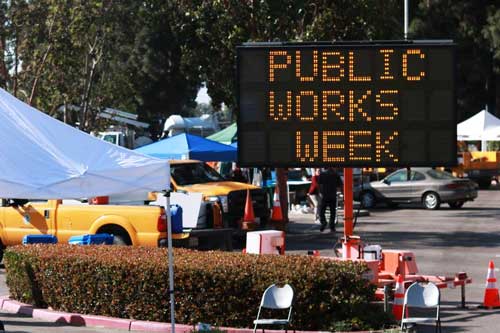For Eco-Tip, VC Star 5-26-19
Options for discard of flags
By David Goldstein
Tomorrow is Memorial Day, so it may be an appropriate time to remind anyone wanting to correctly “retire” their tattered, soiled or badly faded American flags that they may drop off flags at their local chapter of the American Legion, Elk’s Lodge, Veterans of Foreign Wars or at some Boy Scout locations. These organizations retire flags through ceremonial cremation. Following burning, they commemorate the location where ashes are buried. According to proper flag etiquette, any American flag should be given this dignified retirement, including the little plastic flags some realtors distribute by the hundreds along with their business cards or the thousands placed as short-term tributes for veteran’s graves. However, due to issues such as the toxicity of burning plastic and the difficulty of burning nylon, not all organizations are able to handle all types of flags, so call the post nearest to you before dropping off any flags other than cotton standards. David Jones Scout Executive and C.E.O. of Boy Scouts of America Ventura County Council receives thousands of flags per year dropped off at the Scouts’ center on Daily Drive in Camarillo. Great dedication, time, and expense are required to transport these flags to Three Falls Camp in the Los Padres National Forest and then to ceremonially cremate the flags one at a time. Jones reports the center receives two or three flags a day, and only a precious few people and businesses requiring this service of the Boy Scouts drop off a donation along with their flag. While the local Scouts use only the most formal and dignified of retirement ceremonies, including cremation, Jones, citing a 2014 article in Scouting magazine, notes individuals are not violating U.S. Flag code if they use other methods of dignified discard. “As long as the method of retiring the flag is done in a respectful and dignified manner, other methods would be acceptable,” said Jones. The other methods cited in that article start with cutting the flag in quarters, avoiding cuts through the blue field, which represents the union of states. Once the stripes are separated from the stars, it is no longer a flag, and other options become possible. Comments attached to the electronic version of the Scouting article indicate people using this method still exercise care and accord respect toward what was once a flag. For example, some have enclosed a disassembled flag in a box an interned it in the ground, as they would a human body. Until last December, a recycling option was possible. A flag company in Wisconson accepted dropped off or mailed in flags and separated out just nylon ones for recycling at a carpet manufacturer in South Carolina. The carpet manufacturer first cleaned each flag, held a ceremony, stopped their manufacturing line, cleared it of any non-flag material, and then manufactured using just nylon flags. Although the resulting carpet had value, it was insufficient to cover the cost of handling flags, and the shipping and handling was also prohibitively expensive for the flag company.
Cremation at a cemetery is also an option. Air pollution regulations strictly control what can be placed in cemeteries’ crematoria, including clothing worn by the deceased. Nevertheless, Senate Bill 1197 in 2012 allowed flags to be cremated during the week prior and the week following Memorial Day, Flag Day, and the Fourth of July, when cemeteries are most overwhelmed with flags. Jack Feldman, a Director at Mount Sinai Memorial Park, with branches in Simi Valley and Los Angeles, notes few local cemeteries actually use this method of disposal. Mount Sinai, for example, collects flags from veterans graves after three days of display and stores them for reuse. Visitors to graves collect and place the same flags on graves at the next occasion. When flags are damaged or worn, they are delivered to scouts or service organizations for ceremonial discard. Cleaning and mending of the U.S. flag to improve its appearance and extend its life is also a patriotic act allowed by U.S. Flag Code. However, an American Legion web site cautions that removal of material (such as a tattered single stripe) could cause a flag to no longer conform to required size proportions. Supreme Court decisions, including, United States vs. Eichman, decided on June 11, 1990, prohibit criminal penalties for acts of desecration to the flag. However, to many Americans, the flag of the United States is sacred. Dignified discard is essential.






